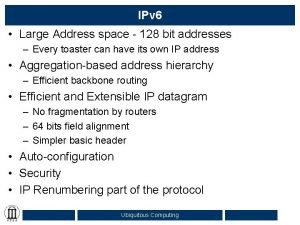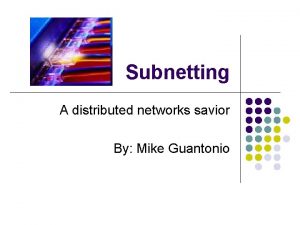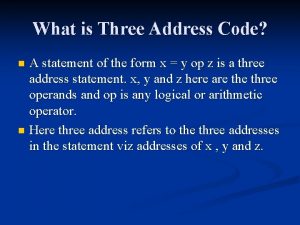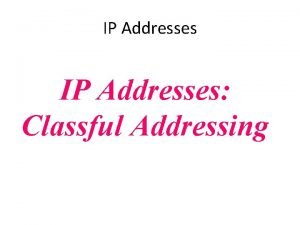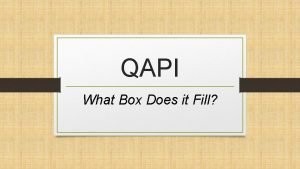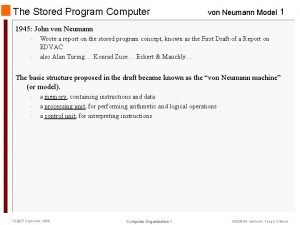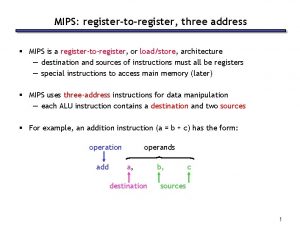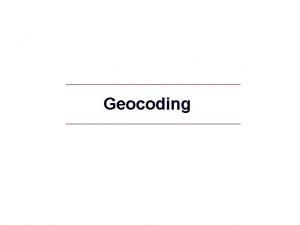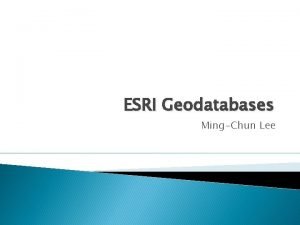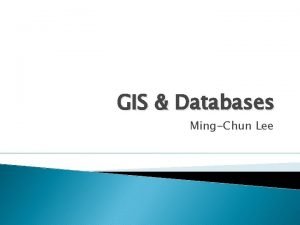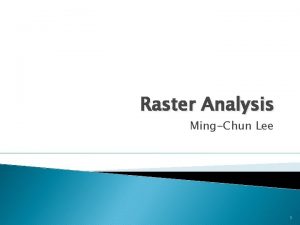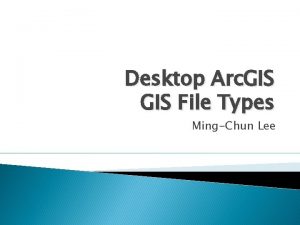Geocoding Addresses MingChun Lee What is geocoding Geocoding













- Slides: 13

Geocoding Addresses Ming-Chun Lee

What is geocoding? Geocoding is defined as the process of creating geometric representations for descriptions of locations In the case of address geocoding, one generally uses points to represent desired addresses

Geocoding is the process of assigning a location to addresses in a table by comparing the addresses to those in a reference layer.

Benefits of geocoding Map customer locations ◦ Planning deliveries ◦ Giving directions ◦ Planning future expansion Internet mapping ◦ Driving directions ◦ Real estate Government applications ◦ Crime analysis ◦ Voter validation

What do you geocode? Tabular data with zip codes, addresses or latitude and longitude… ◦ Text ◦ Databases

Requirements for geocoding Arc. Catalog – create address locators, Arc. Map – geocoding, display geocoded results Address locator – rules for assigning a location to an address Reference layer – address locator assigns address based on information in this layer

Address locator Specifies the method to interpret a particular type of address input, relate it with the reference data and deliver a geocoded output. The rule base is a collection of files used to translate the address data into the desired output

The process of geocoding: Standardizing the address Searching for potential candidates Scoring each candidate Matching address to best candidate

Standardizing the address During this step the address is broken into components For example: street number, street name, street type and street direction

Searching for potential candidates The geocoding service searches the reference layer to find a feature with address components similar to your standardized address Uses spelling sensitivity settings

Scoring each candidate The geocoding service assigns a value from 0 to 100 for each potential candidate Each address component is considered in the scoring The score will be lower if components are misspelled, incorrect or missing

Matching address to best candidate The geocoding service looks for the potential candidate with the highest score If the score exceeds the minimum match score setting, then the service matches the address with that candidate

Rematching If unhappy with initial results, one can modify settings and geocode the table of addresses again Also, you can interactively rematch addresses
 128 bit addresses
128 bit addresses Are we running out of ip addresses
Are we running out of ip addresses Three addresses in three address code are
Three addresses in three address code are Classful ip addressing
Classful ip addressing Ap style basics
Ap style basics Which element of qapi addresses the culture of the facility
Which element of qapi addresses the culture of the facility Neumann dst
Neumann dst Commas (eight basic uses) answer key
Commas (eight basic uses) answer key Utkarsh jaiswal
Utkarsh jaiswal The inside address contains
The inside address contains (acv-s03) homework - addresses and references
(acv-s03) homework - addresses and references Reserved addresses
Reserved addresses Mips register addresses
Mips register addresses I8051
I8051
